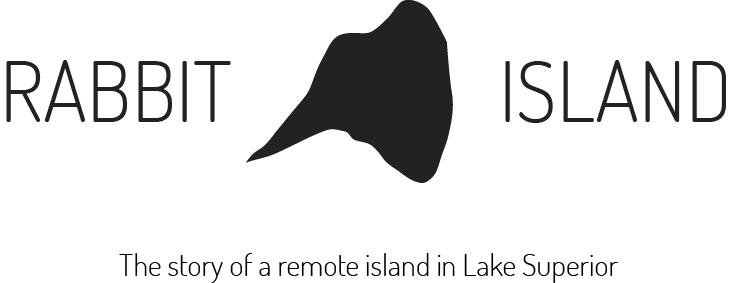Congratulations 2015 Residents
We are excited to announce the 2015 awarded residencies on Rabbit Island. Five artists will receive funding to travel to Rabbit Island as well as a materials stipend, access to our network of mainland facilities, and an exhibition at the DeVos Art Museum with publication in the yearly Rabbit Island catalogue. We are absolutely thrilled to be working with such intelligent and accomplished artists from around the world.
This year the Rabbit Island Residency received 200 proposals from 36 countries encompassing a variety of disciplines. The quality of ideas was inspiring, making selection difficult. Committee members reviewed each proposal, placing significant weight on the quality of each artist’s previous work, strength of specific proposal, the artist’s ability to demonstrate competence in wilderness environments, and the relationship of proposals to Rabbit Island itself and wider contemporary issues. We then held video conferences with 9 shortlisted artists before making final decisions.
Thank you again to everyone who submitted proposals, and congratulations to the following artists:
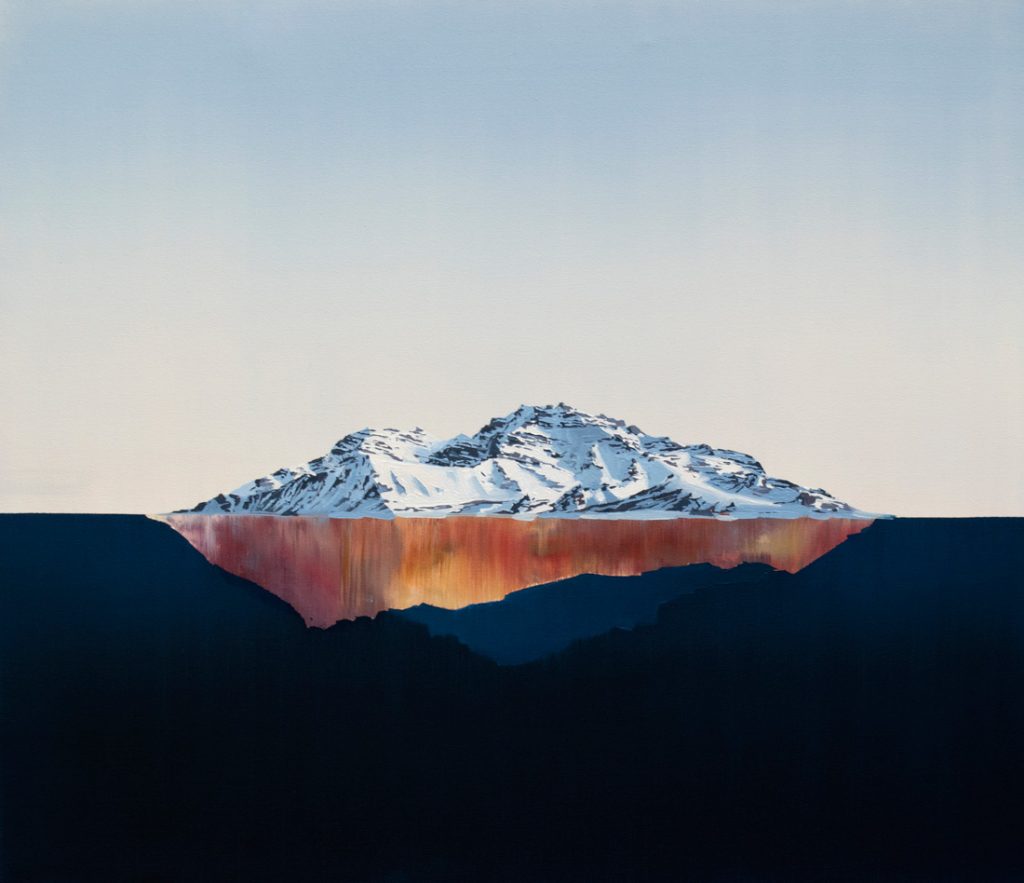
Beau Carey. A landscape painter from Albuquerque, New Mexico, Beau embeds himself in challenging environments to experience and record a sense of place, often uncovering historical and contemporary issues through his interaction. Beau has travelled extensively to remote places to pursue such practice. He has painted in the Arctic Circle in Norway, was the first wintertime artist resident in Denali National Park, and has created bodies of work set in ecologically contentious open spaces such as the Rocky Mountain Arsenal National Wildlife Refuge. He is a founding artist of TANK Studios in Denver, CO.
An excerpt of Beau’s proposal and statement:
Coastal surveying/profiling has long played an important part in my work. First employed by the Portuguese and then the Dutch in the 14th-17th century these navigational profiles ultimately played a huge role in how modern landscape came to be spatially structured. This structure while fully absorbed into the cliché of modern landscape painting is not innocuous. It is rooted in a history of globalism and environmental dominance. As someone who resides in a land locked desert exploring this structure is difficult, as it historically requires a coast. Rabbit Island with the aide of the small boat provided is perfect to continue this research in how we came to see and structure our pictures this way. I also enjoy the idea of surveying an island, not for navigational purposes related to commerce, but to “rediscover” a wild place that has been excluded from development.
Working in the field creates variables that cannot be created the studio. Painting with mittens on in -15 degrees and having to make and mix your paints with walnut oil so they don’t freeze creates marks that are reflective of a situation in a way a photograph isn’t. You can tell when a painting was painted in 45 mph winds because of the dust stuck in it. You make different decisions when you are tired, hungry and exposed. These field paintings come back to the studio and result in larger finished works that reflect observations and ideas obtained in the field.
At the heart of my works lies the central idea that all our experiences of landscape are culturally created. How we interact with spaces is informed by how we are taught to see them. I work with landscape painting, a decidedly un-contemporary genre that is often easily dismissed by a more critical crowd. On top of that I choose to deal with it sincerely, a double blow against initial readings of my work. However it is the difficulty of the subject that ultimately attracts me to it. Its spatial language is accessible, subtle and essential when it comes to how we choose to deal with issues like conservation, wilderness and development.
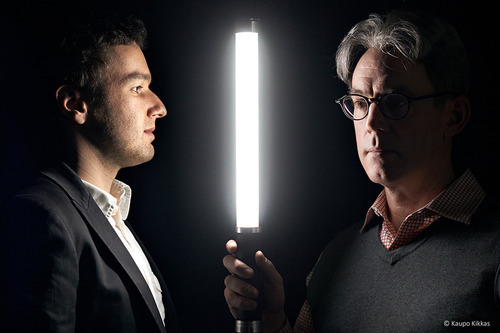
Eugene Birman and Scott Diel. Eugene is a Latvian-born composer based in Oakland, California. He received his M.M. in Music Composition from the Juilliard School, a B.A. in Economics from Columbia, and is currently pursuing a D.Phil in Musical Composition from Oxford University. Scott is an American-born writer based in Tallinn, Estonia, who has freelanced widely. The two have previously collaborated on several operas to critical acclaim. Their recent work, Nostra Culpa, eclectically weaves together the global debate surrounding post-financial crash austerity and a Twitter feud between a Nobel laureate columnist from the New York Times and the president of Estonia. Their unlikely inspiration results from a desire to step away from the formal opera genre and engage a wider audience with classical music that investigates contemporary issues.
An excerpt of Eugene and Scott’s proposal:
“The machine has won,” some have concluded after witnessing the construction of the American interstate highway system, coupled with vast concrete intersections that rise to the heavens. Yet these structures are being dismantled in many places, and a more human-friendly environment is sometimes the result of re-thinking the way we interact as human beings in an urban space. Our project will examine such a possibility in a musical space. The resulting piece of music, which will constitute an extended 40-minute one act opera, will focus not on mythological monsters but on how the very real issues facing the world could inspire people to re-consider their role in their urban environment and the world around them, though the piece will not be overtly utopian. Much like the outmoded machine must be destroyed to form closer bonds of communication in the real, urban world, our opera must first destroy the “deus ex machina” that is so essential to dramatic denouement in the operatic world.
Thus our project will not only challenge audiences to consider their role in an urban society and how to improve it on an individual scale, but essentially all of the existing rules of opera as well.
A residency at Rabbit Island would enable us to complete a full-length opera within three months of the residency’s conclusion. During our stay, we would make meaningful progress on the piece and use the incredible natural surroundings to influence and focus the material to create a piece that reflects both the urban environment we have left behind, and its essential antithesis in the serenity and isolation of the residency itself.
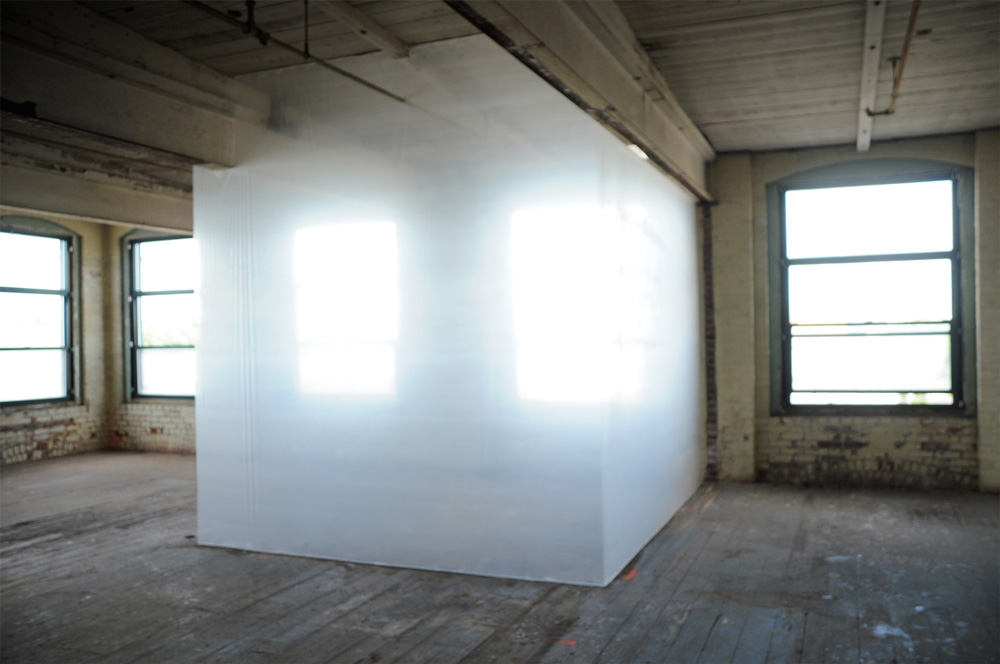
Josefina Muñoz. Josefina is a multi-disciplinary artist from Santiago, Chile, who often works nomadically creating pieces in and about environments she encounters. Josefina’s seemingly disparate projects focusing on material, architecture, location, and culture come together in an overarching impulse to answer questions of global concern. Josefina’s ambitious research project Is_Land will take her to Rabbit Island, Scotland, Chiloé, and Tristan da Cunha–the most remote settled island in the world. Her goal is to create a critical body of work informed by numerous manifestation of the island concept: as space, culture, and metaphor.
An excerpt from Josefina’s proposal:
The work I have developed over the past years is based on the space/place dialectic. Highly influenced by architecture, demographics, and space distribution, I employ different media/processes to comment upon the particularities of the places where I live and work.
I adhere to the premise that an island is a symbol of our larger society. However, if secluded lands develop and transform in the same way as congested territories do, what specific elements characterize their spatiality? How do the 300 Tristans represent the other 7 billion people on Earth? Can 90 undeveloped acres within a lake stand as a mirror for the rest of The Americas?
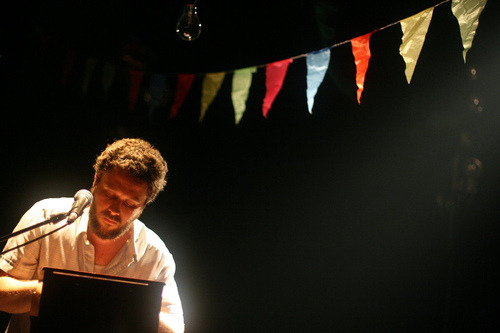
Noam Enbar. Noam is a composer and performer from Tel Aviv, Israel. His anti-establishment band, Habiluim, formed in 2003, has become one of the main radical voices in the Israeli music scene. The dark, political content of Habiluim’s songs is often juxtaposed to ecstatic music, drawing from Russian and East-European folk traditions and inspired by composers such as Kurt Weill and Hanns Eisler. His many musical projects, choral-theatrical pieces and inventive, starkly political works in collaboration with filmmaker Avi Mograbi have been performed at festivals, theaters and museums in Israel and across Europe.
Embedded in Noam’s proposal and previous body of work are themes central to major contemporary global ideological conflicts. In this context he will place himself within the solitude of Rabbit Island’s wilderness and compose a songbook that spotlights the intersection of the political and spiritual within society.
A excerpt from Noam’s proposal:
“The Leibowitz Songbook”. Yeshayahu Leibowitz (1903 -1994) is one of Israel’s great radical thinkers. A professor in biochemistry, neurophysiology and polymath, he is known for his outspoken opinions on religion and politics. Despite being an orthodox Jew, Leibowitz was a defender of the complete separation between religion and state and was amongst the first Israeli intellectuals to declare immediately after the war in 1967 that the occupation of Palestinian territories would inevitably lead to catastrophe and totalitarianism. Some of Leibowitz’s most striking radical critiques are now seen as amazingly accurate predictions and clear political-spiritual suggestions for the betterment of society (not just Israeli society, but any society).
I intend to devote my time on Rabbit Island to immerse myself in Leibowitz's writings and compose a selection of extracted fragments, using a small portable accordion, pencil and paper. These texts have great power and clarity and are asking to be reborn as expressive “speech-songs”.
I imagine the “Leibowitz Song Book” as an eclectic song cycle written for a number of ensembles, choirs and soloists, singers of different backgrounds and singing traditions, and in different languages, hopefully encapsulating something of Leibowitz’s personality—a contemporary thinker who lived and worked on the edge of spirituality, science and politics.
Our call for applications for 2015 residents is now over. We are thrilled by the thoughtful responses from around the world and are in the process of carefully reviewing each proposal submitted. Thank you to everyone who applied. Here are some general submission statistics and an estimated timeline for artist selection and notification.
+ Over 200 applications were received.
+ Applications were sent from 36 different countries.
+ A group of shortlisted applicants will be notified via email during the first week of September and scheduled for individual discussions of their proposed work shortly thereafter.
+ Awarded residencies will be announced in mid to late September.
This is the final week before the 2015 Rabbit Island Residency application deadline. To be considered for next summer please submit your proposal by this Friday, August 22, at midnight EDT. We are looking for artists of any discipline to challenge their practice in a unique wilderness environment.
All awarded residents receive the following:
+ Residence on the island with full access to the island’s infrastructure, tools, library, and research materials.
+ A generous honoraria to cover travel and other expenses.
+ Materials stipend.
+ Connection to our network on the mainland, including various archives and production facilities.
+ An exhibition and catalogue publication at the DeVos Art Museum in Marquette, Michigan.
Photos: Rob Gorski, July-August 2014. (1) A fortuitous flight from a friend of a friend enabled a recent aerial survey of the island. (2) Awakening to heavy rains and gale-force westerly winds. (3) A soundless lake and a peaceful campfire.
Last summer marked the inaugural Rabbit Island School for a group of eight high school sophomores, juniors and seniors. (Imagine NOLS + art camp + Rabbit Island). This past Tuesday the 2015 Rabbit Island School kicked off and tonight the gang is sleeping out under the stars in the midst of Lake Superior for their third night in a row. In celebration we’re highlighting some of the artwork and daily journals created by last year’s participants.
Eight students–all young women, coincidentally–will be spending August 12-19th on the island learning about art and ecology. They will be practicing simple living, low impact camping and Leave No Trace ethics under the guidance of trip leaders David Buth and Christina Mrozik. All of the students hail from southwestern Michigan with the exception of one who attends Calumet High, a local mainland school. Go Copper Kings!
More details about the Rabbit Island School can be found on its official website here. If you know any students who would be interested in applying next year please pass this along and if you are a high school student please do get in touch. The program is open to anyone nationally and internationally.
*** This year’s Rabbit Island School was supported by the KEEN Footwear Company which generously awarded the Rabbit Island Foundation a KEEN Effect grant. These grants were designed to support projects that fuel people’s passion for protecting the environment and promoting responsible outdoor participation. The KEEN Effect program received more than 600 applications and awarded 25 organizations globally with grants totaling $100,000. It was an honor to receive one. KEEN also donated a pair of island-appropriate shoes to each student for the trip. Many thanks to KEEN for helping make this possible.
Rabbit Island 2014 Residency Exhibition
August 18 - September 28, 2014
Devos Art Museum
Marquette, Michigan
The Rabbit Island Residency, located on a remote island in Lake Superior, unofficially launched in 2010. Last year applications were received for the first official residency program from the United States, Australia, South Africa, South America and Europe. This exhibition highlights the work of six artists and writers selected for supported residencies in summer 2014. Each artist spent 1-3 weeks on the island this past June and July.
Work displayed will be a mix of work made during the residency and recent projects completed before the artists’ time on Rabbit Island. Some of the work will be presented as works in progress as the artists begin to reflect on their individual experiences.
Elvia Wilk is a writer based in Berlin, Germany. Her work explores themes of isolation, connection and the relationship between physical and virtual space through essays and poems. The written pieces in the exhibition were designed in collaboration with designer Edwin Carter.
Nich Hance McElroy is a photographer based in Vancouver, British Columbia. During his time in residency he focused on documenting the movements and migrations of people, nature and objects on and between the mainland and island. He also captured people, places and objects around the adjoining Rabbit Bay and Keweenaw areas.
Waboozaki consists of four inter-disciplinary artists, writers and curators: Dr. Dylan Miner (Métis, East Lansing, Michigan), Dr. Julie Nagam (Anishinaabekwe-Métis, Toronto, Ontario, Canada), Dr. Nicholas Brown (Iowa City, Iowa), and Suzanne Morrissette (Cree-Métis, Toronto, Ontario, Canada). During their residency the artists spent time working on individual projects as well as collectively remapping the island from indigenous perspectives.
A full color, fully illustrated catalogue will be released in late September.
This exhibition is supported in part by an award from the Michigan Council for the Arts and Cultural Affairs and the National Endowment for the Arts. Support also provided by the NMU Department of English, NMU Center for Native American Studies, the NMU UNITED Conference, the Canada Arts Council for the Arts, Ontario Arts Council and Rabbit Island Foundation.

A few days ago the last of our 2014 residents departed from the island. They are now back on the mainland preparing their works and research for this years catalogue and exhibition at the DeVos Art Museum. 3 applications (6 artists in total) were awarded a generous honoraria to travel to Rabbit Island; to reflect on and challenge their practice in a remote forested wilderness surrounded by the largest body of freshwater on earth. Sound like something you would be interested in?
One month remains until the August 22nd deadline for 2015 summer residency applications. Visit the Art section to find out how you can live and work on the island next year, and learn more about the publication and exhibition that the DeVos awards each resident.
We are looking forward to your proposal.
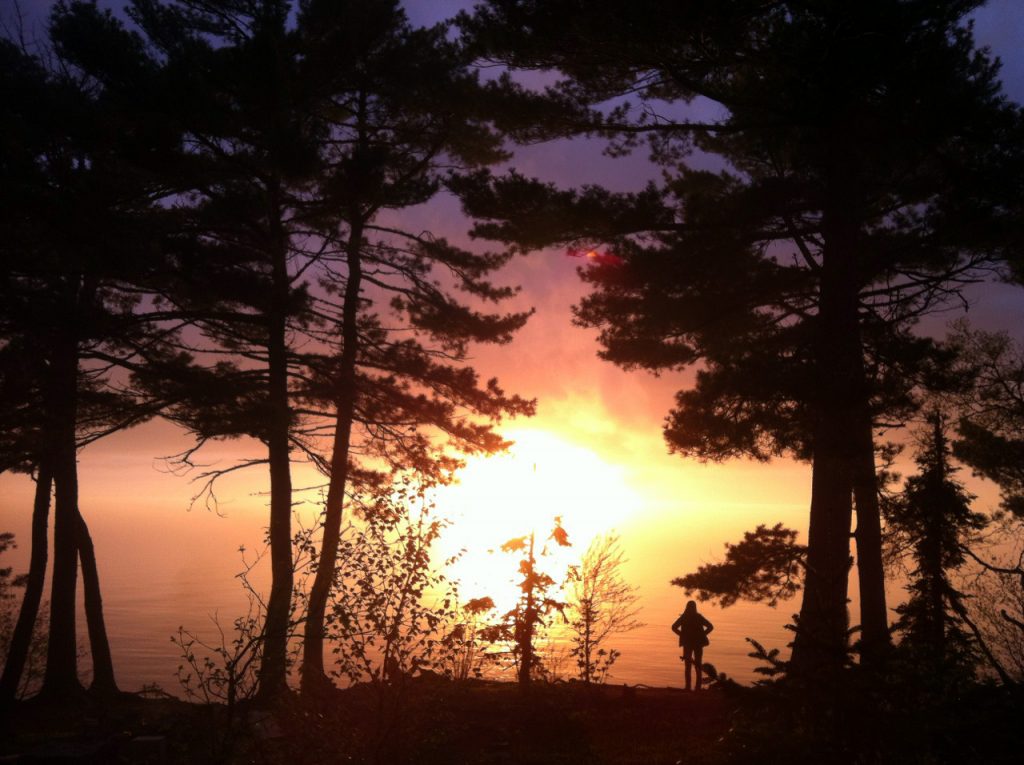
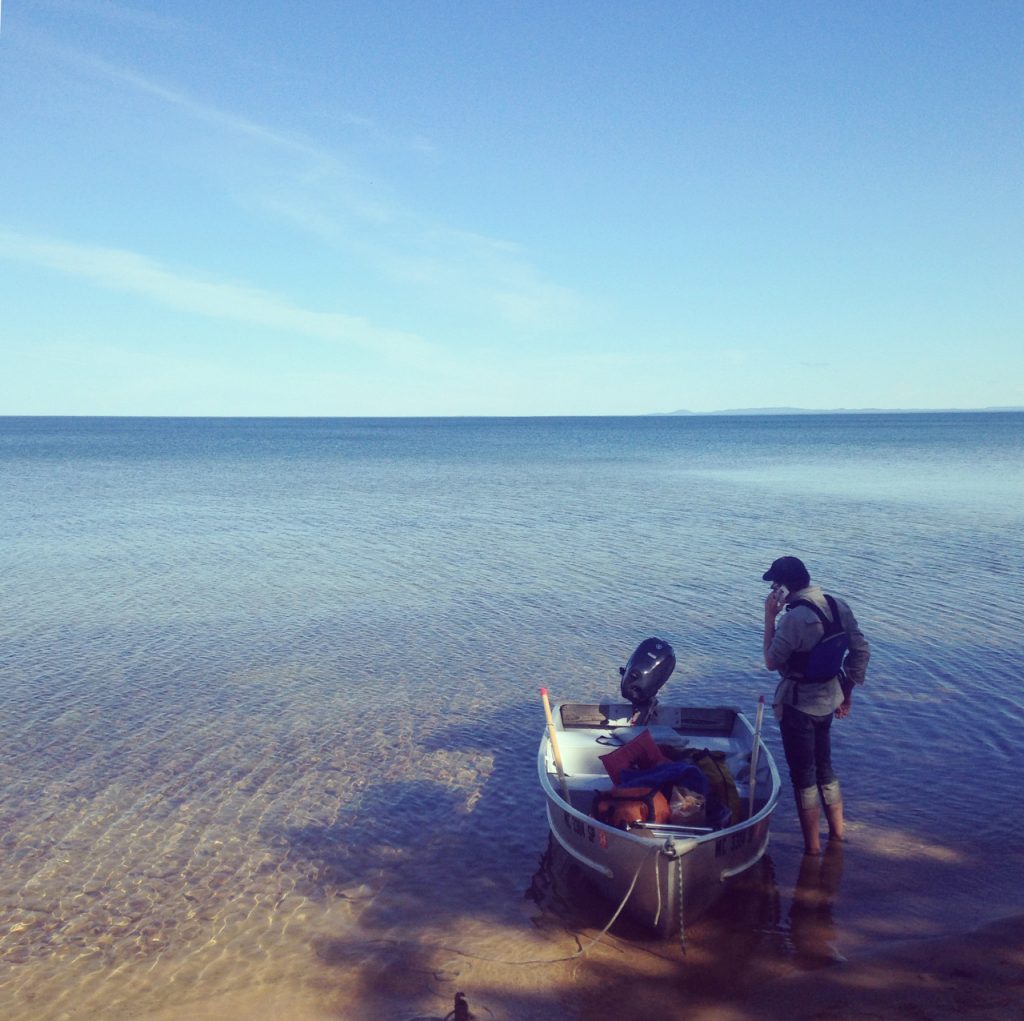
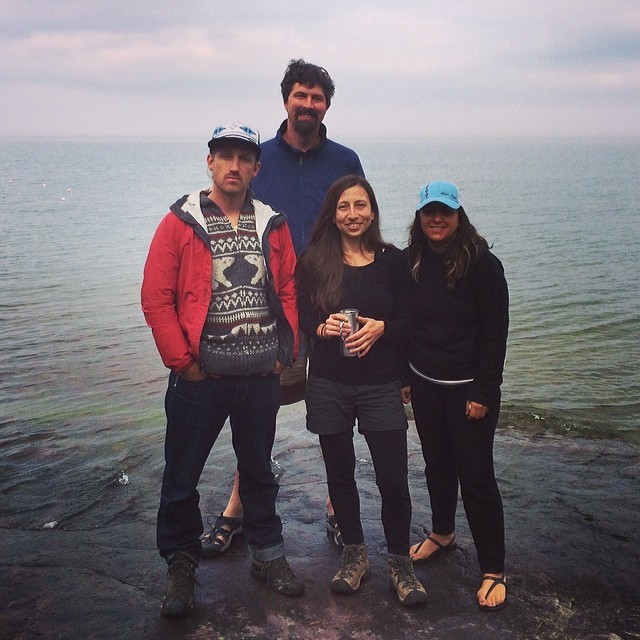
Top. Elvia Wilk (Berlin, Germany). Berlin-based American writer and artist Elvia Wilk arrived on Rabbit Island on June 7th as the season’s first artist in residence. She had prepared to spend over two weeks living alone in the island’s three-sided shelter exploring themes of isolation, connection, and the relationship between physical and virtual space through text-based works including essays and poems. After 7 days, however, high winds, low temperatures and intermittent rain left her no choice but to abandon early to the mainland. This was an unexpected hand dealt by Mother Nature, but such is life on Lake Superior. Regardless, we’re looking forward to an exhibition of her work at the 2014 residency show opening on August 18th at the DeVos Art Museum, alongside the works of the summer’s five other residents.
Middle. Nich Hance McElroy (Vancouver, British Columbia, Canada): Nich arrived on Rabbit Island on June 21st and has been residing there since, with the exception of two days on the mainland to resupply. He intends to depart sometime before July 20th to face the significant task of developing and curating images from the many sheets of film he has taken in residence. His first two weeks were experienced completely solo with the exception of one visit from a local fisherman bearing a coho salmon and six pack of beer. The latter portion of his stay, beginning on the 9th of July, overlaps with the artists from the collaborative group, Waboozaki (below). Nich’s residency application proposed the documentation of movements and migrations of people, nature and objects on and between the mainland and island. This photo shows him touching base on a calm day just before making the four mile crossing back to the island in a twelve foot aluminum boat loaded with large format camera equipment.
Bottom. The collaborative group, Waboozaki: Dr. Dylan Miner (East Lansing, Michigan), Dr. Julie Nagam (Toronto, Ontario, Canada), Dr. Nicholas Brown (Iowa City, Iowa), and Suzanne Morrissette (Toronto, Ontario, Canada). This group of four artists and faculty members from universities in Ontario, Michigan and Iowa, arrived on Rabbit Island on July 9th and will be in residence until July 16th pursuing various projects related to their individual fields of study and shared indigenous heritage.
Nagam’s research interests, for example, include a (re)mapping of the colonial state through creative interventions within concepts of native space. Her areas of interest are cultural geography (urban, rural and remote space), Indigenous critical theory, cultural and performance theory and Indigenous digital and new media. Her creative practices include working in mixed media, such as drawing, photography, painting, sound, projections, and new and digital media.
Miner is an artist, activist, historian and curator. Currently he is an Associate Professor at Michigan State University, where he coordinates a new Indigenous Contemporary Art Initiative and is adjunct curator of Indigenous Art at the MSU Museum. He is pursuing two ideas. The first is described as ‘Michif-Michin’ (The People, The Medicine) which deals with traditional medicines and knowledge of the natural world. The second is 'The Silence of Sovereignty’, dealing with Indigenous political issues.
Morrissette is an artist and writer from Winnipeg Manitoba, who is currently based out of Toronto, Ontario where she studies in a PhD program at York University. She has been exploring Rabbit Island and gathering audio using custom underwater contact microphones designed and built with a collaborator specifically for the residency.
Brown has become interested in the historic L'Anse to Lac Vieux Desert Trail (http://www.lvdtribal.com/trail.html), which was used for centuries (until the 1940s) by the Anishinaabe. His investigations may result in some extended backpacking and kayaking across the Michigan’s Upper Peninsula, literally connecting the island to the historic trail.
Additional research that the collaborative has been compiling, including historical maps of the Rabbit Island region, can be found here: http://ni-aazhawaam-minis.tumblr.com
Information about the Rabbit Island 2014 Residency Exhibition at the DeVos Art Musuem, August 15th - September 28th, 2014.
Science: Baseline Comparison of Island and Mainland Algae
In the summer of 2013 research of algae began on Rabbit Island led by Professor of Microbiology, Tim Gsell, PhD, of Governors State University. Recently his team of graduate and undergraduate students reported initial results which are posted below for review.
Background: The goal of this study is to quantify baseline microbial populations from island and mainland sites to create a foundation for future comparison. Dr. Gsell’s team hypothesized that annual data analysis will allow for identification of changes in microbial populations which will subsequently allow researchers to draw conclusions about Lake Superior water quality, nutrient loading, temperature changes, sources of pollution, fish habitat, and various other interwoven natural relationships.
Microbial characteristics of large bodies of water, and particularly the negative consequences of imbalances of nutrient loading and pollution, frequently become headlines. Lake Erie, for example, the fourth of five lakes in the Great Lakes drainage, suffers annually from runoff from upstream farmland and fertilizer. Similarly, in Lake Superior in 2012, a small algal bloom off the coast of Wisconsin was believed to be the first documented bloom in the lake’s 10,000 year history.
The subtext of this study of algae on Rabbit Island does not overlook such facts, of course, and is rooted in a belief that objective monitoring is required to quantify change over time and relate complex variables systematically. Further, Rabbit Island–situated remotely, undeveloped, uncut, and within the largest, cleanest body of fresh water in the world–serves as an ideal laboratory to measure changes of watershed scale that are manifested microscopically.
Perhaps most important, however, is the idea that creating art on Rabbit Island, and everywhere else, requires consideration of the externalities of one’s creation relative to larger systems of organization. After all, the larger the scale of consideration of one’s creative force, the more classic the resulting actions have the potential to be.
Here are the initial results. The following is a list of what was detected in the algal blooms around the island in comparison to the shoreline during July of 2013.
+ Mainland Samples: Obtained from two points in Lake Superior near the boat landing at Big Traverse Bay, roughly eight miles north of Rabbit Island. These samples had the following cyanobacterial/algae makeup:
Sample 1: Sphaerocystis, Oocystis, Synedra, Fragillaria, Nitschia, Oscillatoria.
Sample 2: Euglena, Ulothrix, Coelastrum, Chlorella, Actinastrum, Diatoms, Synedra, Fragillaria, Asterionella.
+ Rabbit Island Shoreline Samples: Obtained near the island landing and near the northernmost point. These samples had the following cyanobacterial/algae makeup:
Sample 1: Mainly Ulothrix with additional presence of Zygnema, Chlorcocum, Nitschia, Cyclotella, Navicula, Stauroneis, Spirochaetes.
Sample 2: Mainly UIothrix, with additional presence of Ankistrodesmus, Pamella, Microspora, Actinastrum.
Discussion of Findings: Professer Gsell notes that his team found many crossover organisms found between the sites, which would be expected. However, some differences were seen in this rough first analysis, which will be interesting to chart over time and relate to other measured variables such as water temperatures, water clarity, other measurements of pollution, etc
Some potentially confounding methods must also be controlled for in the future in accordance with scientific principle. For instance, it was not easy to discern if the density of algal blooms varied due to the different depths where samples were obtained. A more comprehensive study using quantitative methods, weekly summer samplings and standardized lab procedures is being designed based on these initial findings.
Photographs: Top: Algae adhering to shoreline rocks on the northwest shoulder of Rabbit Island, 2012. Second: A non-fluorescent image of a filamentous green algae under light microscopy. Third: Fluorescence microscopy using DAPI stain on a biofilm sample exhibiting diatoms. Fourth: Under Ultraviolet light Chlorophyll A containing microbes shine bright red without staining due to their native properties.
Microscopic photo credit: Professor Timothy Gsell, PhD.
More can be learned about our open access program for scientists here.
